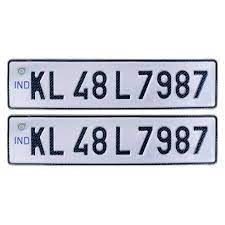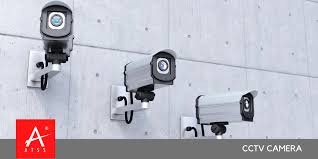Number Plate: A Crucial Identification Tool for Vehicles
In the bustling world of automobiles, number plates play a vital role in identifying vehicles on roads. Also known as license plates or registration plates, these small metal or plastic plates affixed to the front and rear of vehicles serve as a unique identifier for each vehicle. Let’s delve deeper into the significance and functions of number plates.
The primary purpose of a number plate is to establish the legality and ownership of a vehicle. It provides essential information such as the registration number, which is unique to each vehicle. This alphanumeric combination helps authorities track and monitor vehicles for various purposes, including law enforcement, taxation, and traffic management.
One crucial aspect of number plates is their standardized format. In India, number plates follow specific guidelines set by the government. The format typically includes a combination of letters and numbers in a specific sequence. The first two characters represent the state or union territory where the vehicle is registered, followed by a series of numbers or letters denoting the district or RTO (Regional Transport Office). This standardized format ensures uniformity across all vehicles in the country.
Number plates also contribute significantly to road safety. They enable easy identification of vehicles involved in accidents, hit-and-run incidents, or other unlawful activities. Witnesses or CCTV cameras can capture the registration number, allowing law enforcement agencies to trace and apprehend offenders quickly.
Moreover, number plates aid in managing traffic flow and enforcing traffic regulations. Traffic cameras equipped with automatic number plate recognition (ANPR) technology can capture images of passing vehicles and instantly cross-reference them with databases containing information on stolen vehicles, unpaid fines, or expired registrations. This helps authorities take immediate action against violators while ensuring smoother traffic management.
Another emerging use of number plates is in toll collection systems. Electronic toll collection (ETC) systems utilize radio frequency identification (RFID) technology to read vehicle details from their number plates without requiring physical contact with toll booths. This not only reduces traffic congestion but also facilitates seamless and cashless transactions, enhancing the overall driving experience.
In recent years, there have been advancements in number plate technology to enhance security and prevent counterfeiting. High-security number plates (HSN) feature tamper-proof materials, unique holograms, and laser-etched identification numbers. These measures help deter vehicle theft and unauthorized use.
It is essential for vehicle owners to ensure their number plates are legible and in compliance with regulations. Illegible or improperly displayed number plates can lead to penalties or even legal consequences. Regular maintenance and replacement of damaged or faded plates are necessary to maintain their effectiveness as identification tools.
In conclusion, number plates play a crucial role in identifying vehicles, maintaining road safety, and facilitating various administrative processes. They serve as a unique identifier for each vehicle while enabling law enforcement agencies to track and manage traffic effectively. As technology continues to advance, we can expect further innovations in number plate systems that enhance security and streamline operations on our roads.
Commonly Asked Questions About Vehicle Number Plates in India
- What is the format of a vehicle number plate in India?
- How much does it cost to get a new number plate for a vehicle?
- How do I check if my vehicle registration number is valid?
- Can I transfer my existing number plate to another vehicle?
- Is it mandatory to display the front and rear registration plates on vehicles in India?
What is the format of a vehicle number plate in India?
The format of a vehicle number plate in India follows a standardized pattern set by the government. The typical format includes a combination of letters and numbers arranged in a specific sequence. Here is the breakdown of the format:
- The first two characters: The first two characters on an Indian vehicle number plate represent the state or union territory where the vehicle is registered. Each state or union territory has its unique code assigned to it. For example, “DL” represents Delhi, “MH” represents Maharashtra, “KA” represents Karnataka, and so on.
- Next characters: Following the state code, there are usually one to three characters that indicate the district or RTO (Regional Transport Office) within the state where the vehicle is registered. These characters can be either numbers or letters.
- Alphanumeric combination: After the district code, there is an alphanumeric combination consisting of a series of numbers and letters. This combination is unique to each vehicle and serves as its registration number.
It’s important to note that different states may have slight variations in their number plate formats within this general framework. Additionally, certain categories of vehicles such as commercial vehicles, taxis, government vehicles, etc., may have specific prefixes or suffixes added to their number plates to indicate their usage.
It is advisable for vehicle owners to familiarize themselves with the specific rules and regulations regarding number plates in their respective states or union territories to ensure compliance with local requirements.
How much does it cost to get a new number plate for a vehicle?
The cost of getting a new number plate for a vehicle can vary depending on several factors, including the country or region where the vehicle is registered and the type of number plate required. Here are some general considerations:
- Standard Number Plates: In many countries, standard number plates are issued by the government’s transport authority or designated agencies. The cost for obtaining these plates is typically included in the initial registration fees or vehicle purchase price.
- Personalized/Customized Number Plates: If you wish to personalize your number plate with specific letters, numbers, or combinations, there may be additional fees involved. The cost for personalized plates can vary significantly depending on the popularity and demand for certain combinations.
- Specialized/Decorative Number Plates: Some regions offer specialized or decorative number plates that feature unique designs, logos, or themes. These plates are usually optional and come at an extra cost beyond the standard registration fees.
- Replacement Number Plates: If you need to replace a damaged, lost, or stolen number plate, there may be a separate fee for obtaining a new one. This fee is typically lower than the cost of acquiring a completely new set of plates during initial registration.
It’s important to note that specific charges and regulations regarding number plates can differ from one jurisdiction to another. It is advisable to check with your local transport authority or vehicle registration office to get accurate information about the costs associated with obtaining a new number plate in your area.
How do I check if my vehicle registration number is valid?
To check if your vehicle registration number is valid, you can follow these steps:
- Visit the official website of your country’s transport department or regional transport office (RTO). This is usually the government agency responsible for vehicle registration and licensing.
- Look for the section or tab related to vehicle registration or vehicle information.
- Enter the required details, which typically include your vehicle registration number. Make sure to enter the number accurately, including any alphabets or special characters.
- Click on the “Submit” or “Search” button to initiate the search process.
- The system will then verify the entered registration number against its database and display the results.
- If your registration number is valid, you should see information such as the vehicle make, model, color, owner’s name (partial or complete), and other relevant details associated with your vehicle.
- If there are any issues with your registration number, such as expired registration or incorrect details, it may be flagged in the search results.
Please note that the exact process may vary depending on your country and its specific transport department’s online services. It is advisable to refer to official government websites for accurate and up-to-date information regarding vehicle registration verification.
Can I transfer my existing number plate to another vehicle?
Yes, in many countries, it is possible to transfer an existing number plate from one vehicle to another. However, the specific rules and procedures for transferring number plates may vary depending on the jurisdiction and local regulations.
To transfer a number plate to another vehicle, you typically need to follow these general steps:
- Check eligibility: Ensure that you meet the eligibility criteria for transferring a number plate. Some common requirements include being the registered owner of both vehicles involved in the transfer and ensuring that both vehicles are of the same category (e.g., private cars, motorcycles, commercial vehicles).
- Notify authorities: Inform the relevant transport authority or motor vehicle department about your intention to transfer the number plate. This can usually be done by submitting an application form along with supporting documents.
- Provide necessary documentation: Prepare and submit all required documents for the transfer process. These may include proof of ownership for both vehicles, valid insurance certificates, roadworthiness certificates (if applicable), and identification documents.
- Pay fees: Pay any applicable fees associated with transferring the number plate. The fee amount can vary depending on the jurisdiction and specific circumstances.
- Complete paperwork: Fill out any necessary forms or paperwork provided by the transport authority or motor vehicle department accurately and completely.
- Physical inspection: In some cases, authorities may require a physical inspection of both vehicles involved in the transfer process to ensure compliance with safety and roadworthiness standards.
- Receive new registration documents: Once approved, you will receive new registration documents reflecting the transferred number plate on the newly assigned vehicle.
It is crucial to note that these steps are general guidelines and may differ based on your location. It is advisable to consult your local transport authority or motor vehicle department for precise information regarding transferring number plates in your specific jurisdiction.
Remember to adhere to all legal requirements and regulations throughout the process to ensure a smooth and lawful transfer of your existing number plate to another vehicle.
Is it mandatory to display the front and rear registration plates on vehicles in India?
Yes, it is mandatory to display both front and rear registration plates on vehicles in India. As per the Motor Vehicles Act, 1988, all motor vehicles must have two registration plates – one on the front and another on the rear. These plates contain the vehicle’s registration number and other necessary information.
The front registration plate is usually affixed to the front bumper or grille of the vehicle, while the rear plate is attached to the back of the vehicle. Both plates should be securely fastened and clearly visible. It is important to note that tampering with or obscuring the number plates in any way is illegal.
Displaying both front and rear registration plates helps law enforcement agencies identify vehicles easily and enforce traffic regulations effectively. It also aids in identifying vehicles involved in accidents or unlawful activities, as witnesses or surveillance cameras can capture the registration number from different angles.
Failure to display both front and rear registration plates can result in penalties or legal consequences. Vehicle owners should ensure that their number plates are legible, properly displayed, and comply with the standardized format prescribed by the government.



